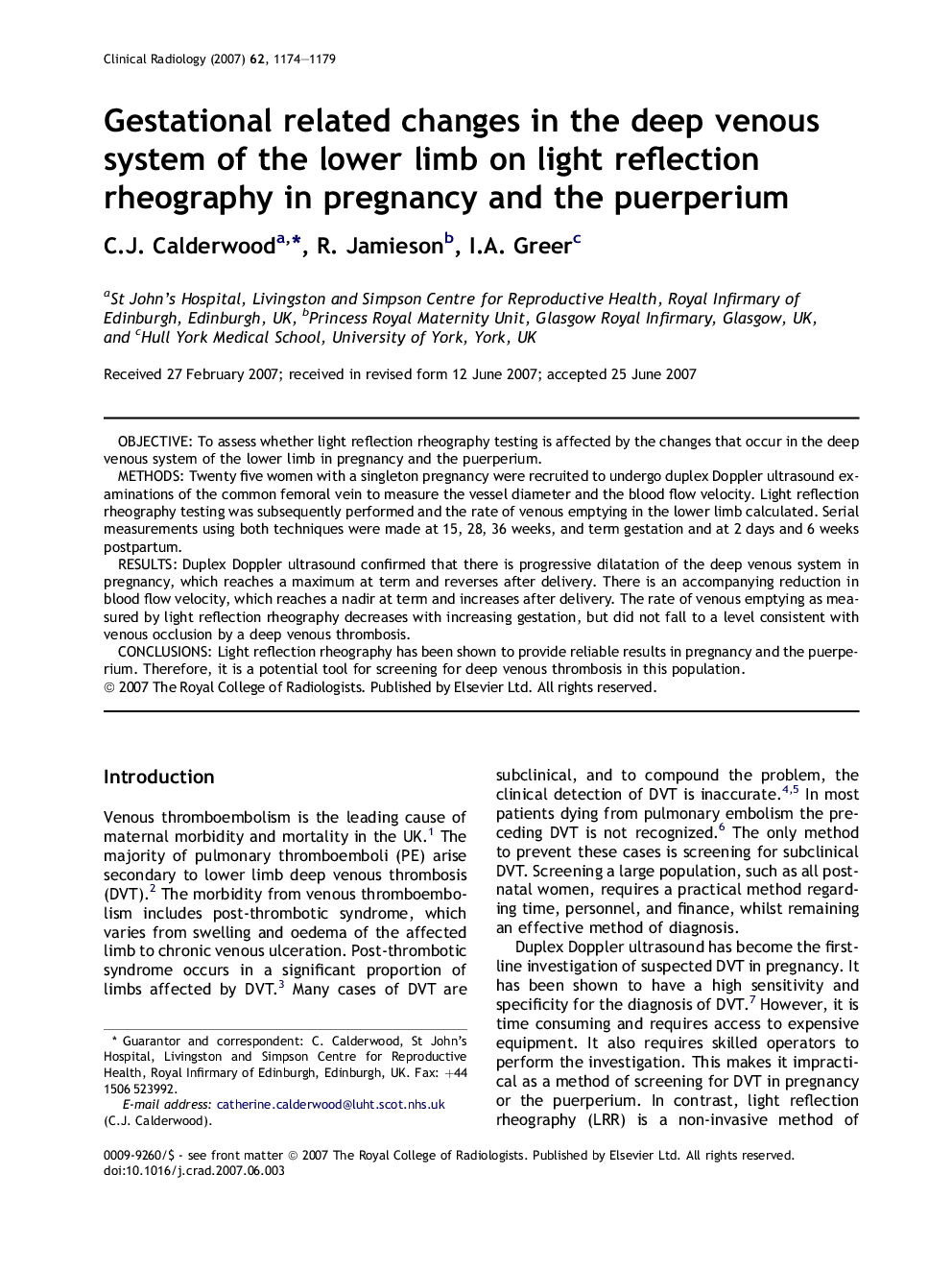| Article ID | Journal | Published Year | Pages | File Type |
|---|---|---|---|---|
| 3983674 | Clinical Radiology | 2007 | 6 Pages |
ObjectiveTo assess whether light reflection rheography testing is affected by the changes that occur in the deep venous system of the lower limb in pregnancy and the puerperium.MethodsTwenty five women with a singleton pregnancy were recruited to undergo duplex Doppler ultrasound examinations of the common femoral vein to measure the vessel diameter and the blood flow velocity. Light reflection rheography testing was subsequently performed and the rate of venous emptying in the lower limb calculated. Serial measurements using both techniques were made at 15, 28, 36 weeks, and term gestation and at 2 days and 6 weeks postpartum.ResultsDuplex Doppler ultrasound confirmed that there is progressive dilatation of the deep venous system in pregnancy, which reaches a maximum at term and reverses after delivery. There is an accompanying reduction in blood flow velocity, which reaches a nadir at term and increases after delivery. The rate of venous emptying as measured by light reflection rheography decreases with increasing gestation, but did not fall to a level consistent with venous occlusion by a deep venous thrombosis.ConclusionsLight reflection rheography has been shown to provide reliable results in pregnancy and the puerperium. Therefore, it is a potential tool for screening for deep venous thrombosis in this population.
